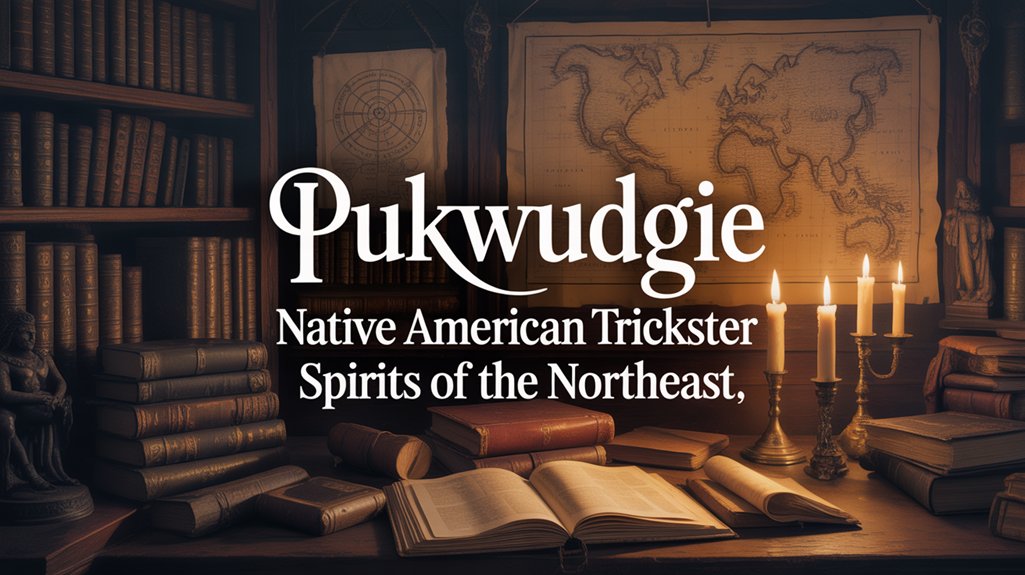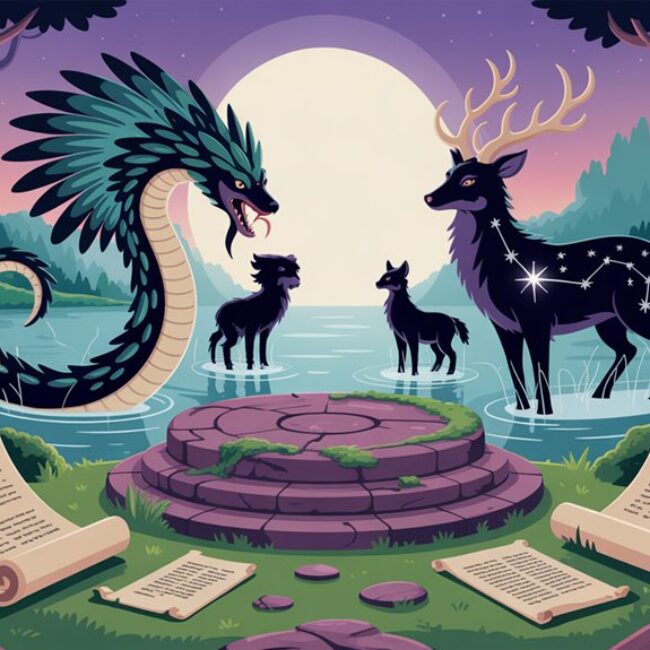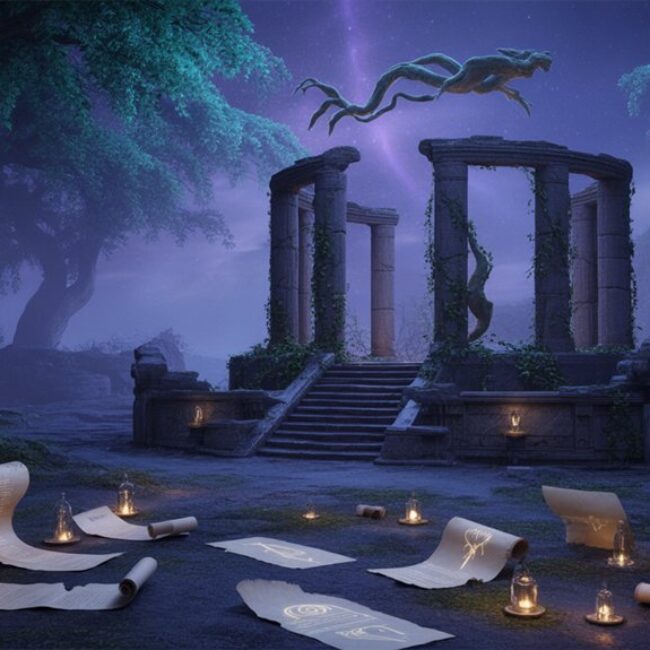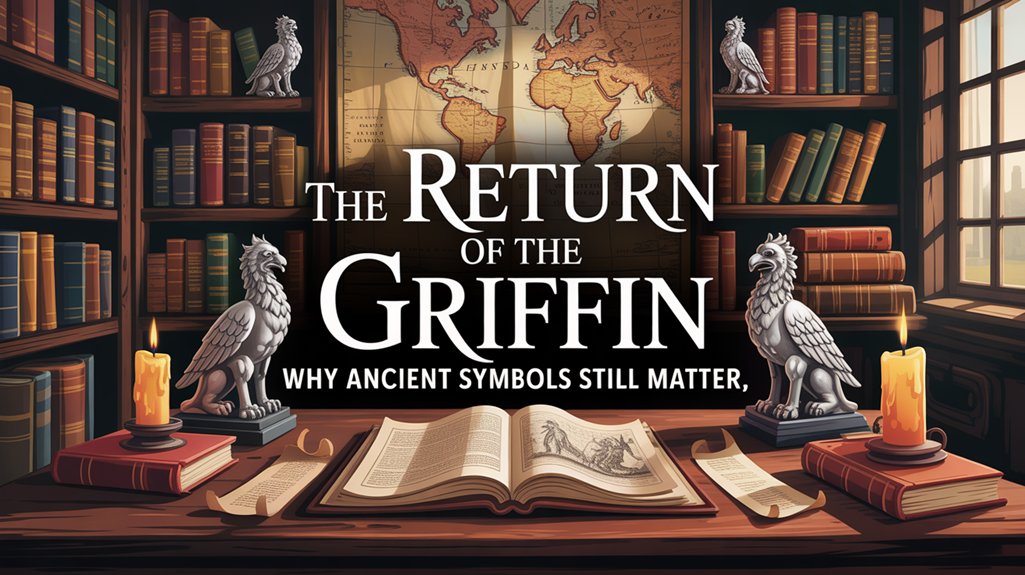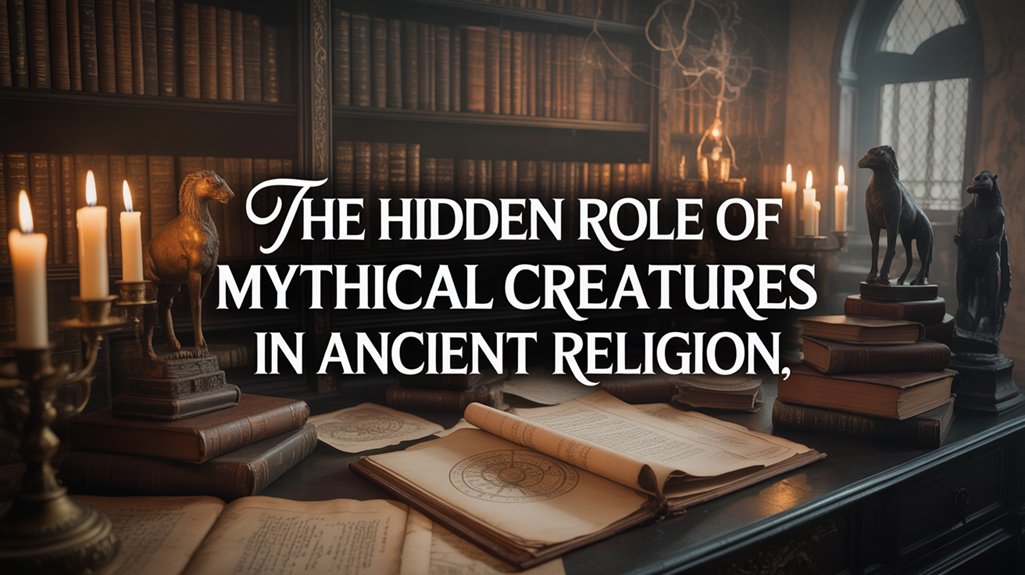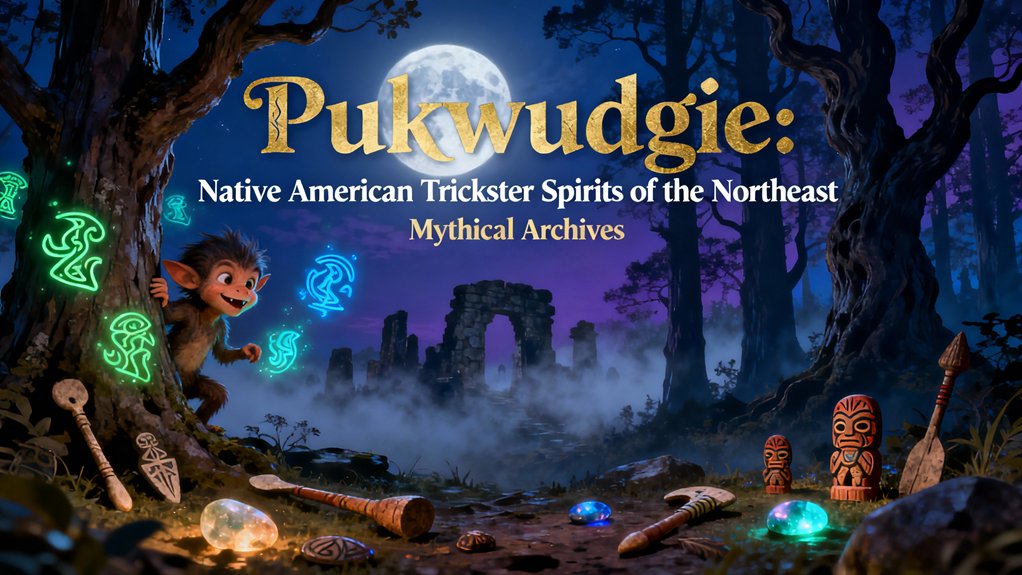
You’ll find Pukwudgies haunting Wampanoag territories as two-to-three-foot beings whose grey, chimeric forms embody nature’s dangerous autonomy—once benevolent attendants to Maushop the Giant, they changed into malevolent tricksters through jealousy and pride. They command fire through thought, shoot enchanted arrows inducing madness, and shape-shift into porcupines or cougars while luring travelers with phantom voices. Their concentrated presence in Massachusetts’s Bridgewater Triangle, particularly Freetown-Fall River State Forest, generates modern encounters with luminous-eyed figures that challenge the boundary between eldritch folklore and contemporary experience.
Table of Contents
ToggleKey Takeaways
- Pukwudgies are protective forest spirits from Wampanoag oral traditions, standing two to three feet tall with grey skin and otherworldly features.
- These beings possess supernatural abilities including shape-shifting, fire manipulation, voice mimicry, and shooting enchanted arrows that cause madness.
- Originally benevolent helpers to Maushop the Giant, they transformed into malevolent tricksters due to jealousy and neglect from humans.
- They inhabit northeastern forests, particularly Massachusetts’ Bridgewater Triangle, where mysterious disappearances and strange lights persist through modern times.
- The Wampanoag view Pukwudgies as dangerous guardians of sacred grounds requiring respect, not romanticized nature spirits as outsiders often misinterpret.
Origins and Cultural Significance in Algonquian Tradition
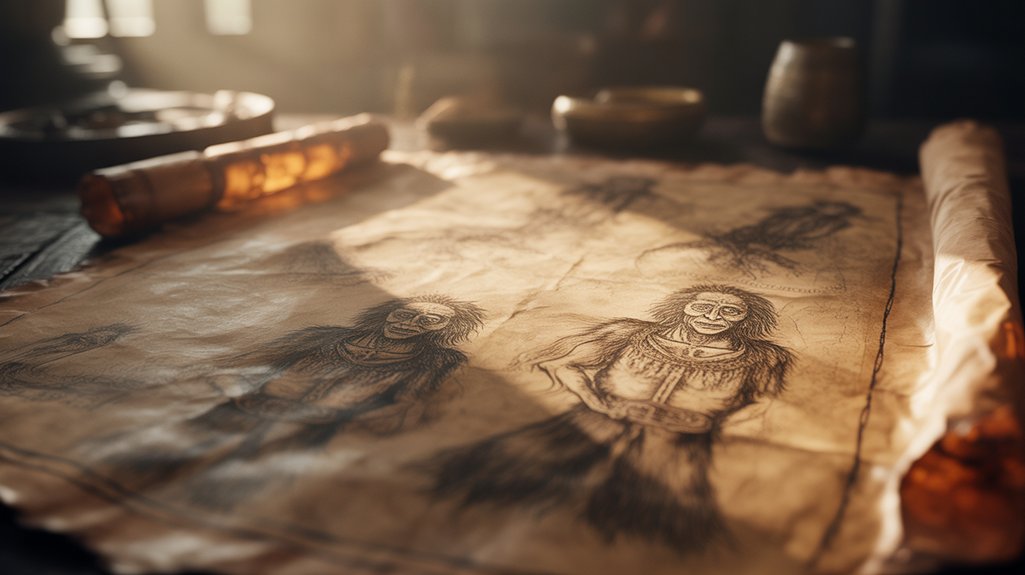
Among the Wampanoag peoples of what’s now southeastern Massachusetts and Rhode Island, the Pukwudgie emerged from oral traditions as creatures of profound duality—protective forest guardians who could just as readily become harbingers of misfortune.
You’ll find these eldritch beings woven throughout Algonquian mythology, where they’ve occupied liminal spaces between benevolence and malevolence for centuries predating European contact. Standing two to three feet tall, bearing chimeric features both human and otherworldly, they represent spiritual symbolism that defies simple categorization.
Their cultural significance extends beyond mere folklore. These entities embody the Wampanoag understanding of nature’s autonomy—forces you can’t control or fully comprehend.
They’ll vanish into woodlands. Reappear without warning. The Pukwudgies demand respect, not worship, reminding you that certain territories belong to powers older than human memory.
Within Algonquian cosmology, they serve as mediators between visible and invisible domains, teaching through consequence rather than instruction.
Physical Descriptions and Distinguishing Characteristics
You’ll find the Pukwudgie standing no taller than two or three feet—a diminutive stature that belies their formidable supernatural potency. Their compact frames are described in Wampanoag oral traditions dating back countless generations before European contact.
Their most striking features include grey, ash-colored skin that seems to absorb rather than reflect moonlight, large noses that dominate wizened faces, and fingers that end in knife-like appendages capable of both delicate magic-working and swift violence.
These eldritch beings possess an unsettling chimeric quality: part humanoid, part something altogether other, with smooth backs occasionally giving way to quill-covered flesh reminiscent of porcupines. Their bodies are marked by the liminal spaces they inhabit between the human world and spirit domains.
Size and Stature Features
The Pukwudgie stands at a diminutive height of two to three feet—though some Wampanoag accounts describe specimens reaching four feet—with proportions that mirror human anatomy in miniature yet distorted form.
These size comparison measurements place them perpetually between worlds, neither animal nor fully human. Their stature variations reflect regional oral traditions across Algonquian territories, each community preserving slightly different physical parameters.
The eldritch beings possess compact, muscular frames that belie supernatural strength—capable of wielding weapons with lethal precision.
Their chimeric proportions create an unsettling presence: abbreviated limbs attached to torsos that suggest human origin, yet compressed into something fundamentally other.
This deliberate ambiguity in their physical manifestation serves spiritual purposes, allowing them to occupy threshold spaces where conventional reality fractures.
They embody metamorphosis itself.
Notable Physical Attributes
Skin textures distinguish Pukwudgies from ordinary forest creatures through descriptions preserved in Wampanoag oral histories—surfaces that shift between gray-green epidermis reminiscent of weathered bark and flesh tones that echo decaying leaves.
You’ll find Pukwudgie colors reflect their chimeric nature: ashen hues that blend effortlessly with twilight forests, occasionally punctuated by phosphorescent glows emanating from eyes or fingertips.
These eldritch beings possess oversized noses—prominent features that dominate their faces and improve their unsettling appearance.
Pukwudgie expressions range from grotesque grimaces to disconcertingly human smiles, each conveying malicious intent. Their fingers extend into unnaturally long digits, tipped with sharpened nails capable of both delicate manipulation and violent action.
Sparse hair covers their bodies in patches. Physical manifestation remains fluid, adapting to surrounding environments with predatory efficiency.
Supernatural Powers and Abilities
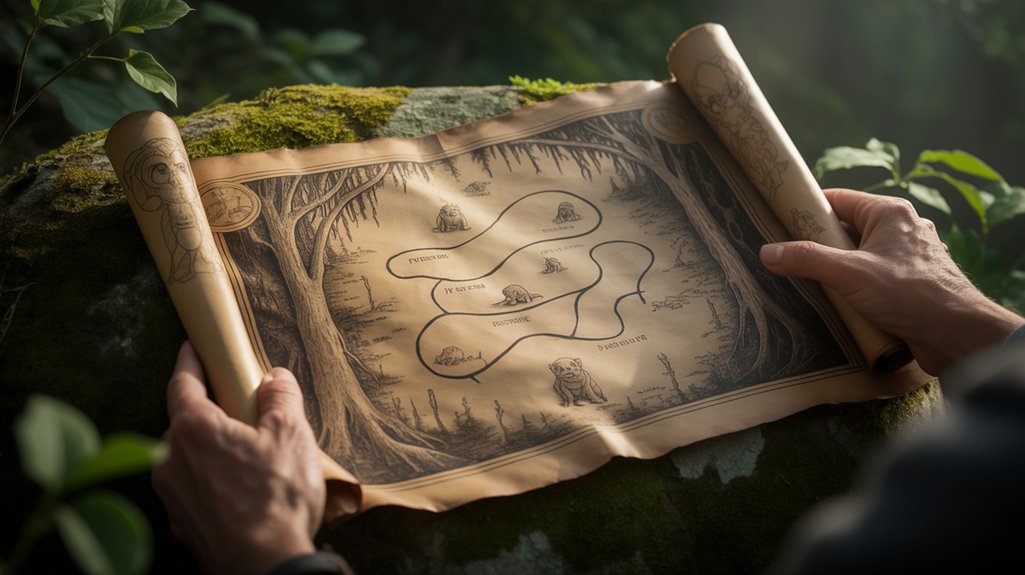
According to Wampanoag oral traditions documented by ethnographers in the late nineteenth century, Pukwudgies possess formidable supernatural capabilities that render them among the most dangerous entities in Algonquian cosmology.
You’ll find their shape shifting abilities allow alteration into porcupines, cougars, and chimeric forms that defy natural law. They command fire without flame-source, manifesting eldritch pyrotechnics from mere thought. Their arrows carry enchantments—wounds that never heal, madness that lingers for generations.
These beings master magical trickery through voice manipulation, projecting calls across impossible distances, luring travelers into swamps and cliff edges. They disappear mid-stride. Reappear behind you.
Their most feared talent: the power to bewitch, ensnaring human consciousness within spectral illusions indistinguishable from waking reality. Pukwudgies create phantom paths through familiar forests, altering known territories into labyrinthine death-traps.
Some accounts credit them with poisoncraft, their weapons dipped in substances both botanical and otherworldly, ensuring swift incapacitation of any who threaten their territorial sovereignty.
The Great Transformation: From Helpers to Hostile Spirits
When Maushop the Giant first walked among the Wampanoag peoples, the Pukwudgies served as his devoted attendants, performing acts of benevolence that earned them reverence throughout the coastal territories of what colonizers would later designate Massachusetts and Rhode Island.
Yet change narratives reveal how pride corrupted these diminutive guardians. You’ll discover that jealousy festered as humans praised Maushop’s might while overlooking Pukwudgie contributions. The spirit evolution accelerated when Maushop’s wife, Granny Squannit, intervened in tribal disputes, further marginalizing the forest dwellers.
Their alteration from benefactors to malevolent entities emerged through deliberate choice rather than external curse. The Pukwudgies embraced eldritch powers once forbidden, wielding poisoned arrows and chimeric abilities to lure travelers toward cliff edges.
This profound shift reflects deeper cosmological tensions within Algonquian worldviews—the recognition that beings possessing autonomous will can choose darkness. Their change warns against unchecked resentment, demonstrating how wounded pride births hostility.
Notable Legends and Encounters Throughout History
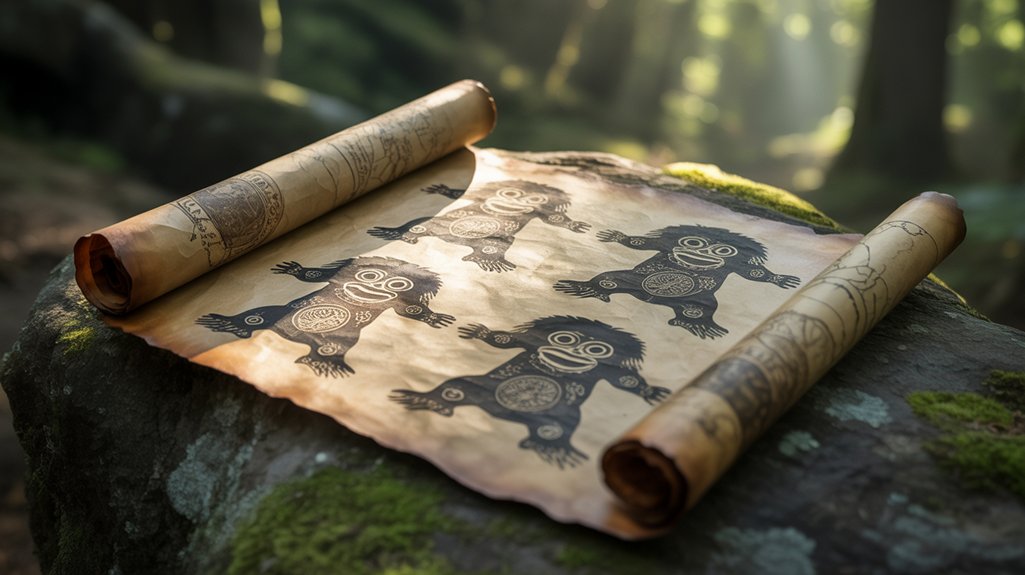
Throughout the seventeenth century—as Puritan settlements encroached upon Wampanoag territories—written accounts began documenting encounters that indigenous oral traditions had preserved for generations.
You’ll find these Pukwudgie encounters recorded in colonial journals, describing diminutive figures emerging from coastal marshlands at twilight, their eldritch presence marked by mysterious lights dancing through forest groves. The Assonet Ledge near Freetown, Massachusetts, became particularly notorious for such manifestations.
Pukwudgie legends intensified during the 1790s, when travelers reported vanishing along wooded trails. Witnesses described chimeric beings wielding flame, their gray-skinned forms barely reaching two feet in height.
You’d hear their distinctive whistles echoing through pine barrens before livestock mysteriously perished or children wandered off, entranced.
The Bridgewater Triangle—a region encompassing southeastern Massachusetts—continues generating reports into modern times.
These aren’t mere folklore remnants. They’re living testimonies to ancestral knowledge, persistent reminders that certain territories demand respect, certain boundaries mustn’t be crossed without understanding the ancient compacts that govern liminal spaces.
Regional Variations Across Northeastern Tribes
While the Wampanoag traditions of southeastern Massachusetts gave us the term “Pukwudgie”—derived from *pukwudjininee*, meaning “little wild man of the woods”—neighboring Algonquian-speaking nations recognized similar entities under divergent names, each designation reflecting subtle variations in character and relationship to their respective peoples.
Each Algonquian nation named their forest dwellers differently, revealing how language preserved distinct relationships between peoples and supernatural guardians.
You’ll discover profound divergence in regional beliefs as you trace these eldritch beings across tribal territories:
- Abenaki Nagumwasuck: Stone-throwing forest guardians dwelling in Vermont’s shadowed hollows, protectors of sacred groves.
- Mohegan Makiawisug: Connecticut’s “little people” who punish disrespect toward nature with chimeric ferocity.
- Narragansett Puckwudjinee: Rhode Island’s cannibal variants, more malevolent than their Massachusetts cousins.
- Penobscot Wiklatmu’j: Maine’s shape-shifting tricksters who guard boundary waters.
These tribal stories, transmitted through generations, reveal how geography shaped supernatural taxonomy.
Each nation’s encounters produced distinct protocols for engagement. Respect remained universal currency, though consequences for transgression varied dramatically between coastal and inland traditions.
Modern Interpretations and Contemporary Sightings
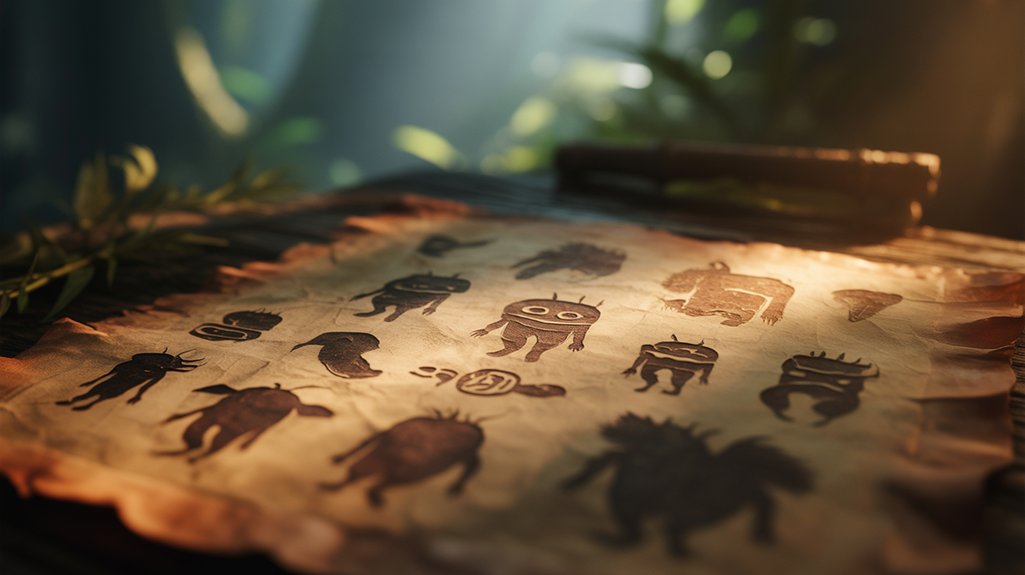
As modernity encroached upon the ancient forests of New England, Pukwudgie encounters didn’t vanish—they evolved, adapting to twentieth and twenty-first century contexts with unsettling persistence.
You’ll find modern sightings concentrated in Massachusetts’ Freetown-Fall River State Forest, where hikers report witnessing diminutive figures with luminous eyes, their movements defying conventional physics. These aren’t mere folklore echoes.
Contemporary witnesses describe experiences mirroring traditional accounts: phantom lights dancing between hemlock groves, inexplicable feelings of dread, objects vanishing from campsites.
The Wampanoag Nation maintains these entities remain active guardians, their presence misunderstood by outsiders who trespass sacred grounds. Cultural interpretations have shifted—some New Age practitioners romanticize Pukwudgies as nature spirits, while indigenous communities emphasize their eldritch danger, their chimeric nature demanding respect rather than curiosity.
You’re witnessing living mythology. These beings refuse categorization within Western frameworks, existing in liminal spaces where ancient wisdom meets unexplained phenomena, challenging your assumptions about reality’s boundaries.
Frequently Asked Questions
How Do You Protect Yourself From a Pukwudgie Attack?
You’ll need protective charms rooted in Wampanoag tradition—tobacco offerings, sacred bundles, spoken prayers to ancestral spirits.
These folklore tactics acknowledge the pukwudgie’s eldritch nature while establishing respectful boundaries.
Don’t wander forests alone at twilight; they’re drawn to solitary wanderers.
Carry iron implements, wear red cloth, maintain vigilant awareness of shifting shadows.
The Algonquian peoples understood: protection isn’t domination but recognition of ancient powers dwelling in liminal spaces between your world and theirs.
Are There Any Pukwudgie Sightings Reported Outside the Northeastern United States?
You’ll find no authenticated pukwudgie sightings beyond their ancestral territories—these eldritch beings remain bound to Wampanoag lands, Massachusetts forests, and neighboring Algonquian regions.
While modern enthusiasts freely appropriate their name, genuine encounters don’t migrate westward.
Regional variations exist: the Abenaki speak of similar tricksters, the Mohegan know parallel entities, yet these represent distinct traditions, not transplanted pukwudgies.
Respect demands we acknowledge these creatures as rooted spirits, forever tethered to their primordial woodlands, resisting colonization even by popular imagination.
Can Pukwudgies Be Communicated With or Befriended by Humans Today?
You’d be unwise to pursue Pukwudgie communication actively.
These eldritch beings aren’t benevolent companions seeking human friendship—traditional Wampanoag and Algonquian accounts warn against such encounters.
Pukwudgies deceive, mislead, vanish. They inhabit liminal thresholds where your world intersects theirs, responding only on their terms.
Modern practitioners of indigenous spiritual traditions maintain respectful distance, honoring these entities through offerings and acknowledgment rather than attempting direct contact.
Your safety demands recognition: some ancient powers should remain undisturbed, autonomous.
What Should You Do if You Encounter a Pukwudgie?
Like a deer freezing before unseen predators, you must heed ancestral pukwudgie warnings immediately upon sensing their eldritch presence.
Your encounter reactions should prioritize swift, respectful withdrawal—never challenging these chimeric beings or attempting contact. Offer tobacco, acknowledge their territorial sovereignty through verbal respect, then retreat without turning your back completely.
The Wampanoag understood: these forest guardians demand recognition, not friendship. Your freedom exists in honoring boundaries they’ve maintained since time immemorial.
Are There Any Rituals to Appease or Ward off Pukwudgies?
You’ll find pukwudgie rituals deeply rooted in Algonquian tradition, though specific practices remain closely guarded by tribal elders.
Spirit offerings of tobacco, cornmeal, and sweetgrass can establish respectful boundaries—never appeasement, for these eldritch beings reject subservience.
The Wampanoag emphasize maintaining humility, avoiding hubris that attracts their malevolent attention.
Protection comes through acknowledging their sovereignty over liminal forest spaces.
Respect their autonomy; they’re not chimeric fantasies but manifestations of ancient wildness demanding recognition, not control.
Conclusion
You stand at twilight’s threshold now, where Pukwudgie shadows still dance between hemlock and memory. They’re America’s wild conscience—trickster guardians embodying humanity’s fractured covenant with wilderness. Neither wholly malevolent nor benign, these chimeric beings mirror your own duality, your civilization’s eldritch alteration from reverent coexistence to dominion. When you glimpse movement in New England’s forests, you’re witnessing more than folklore. You’re confronting indigenous wisdom made manifest, demanding recognition of what you’ve forgotten.

